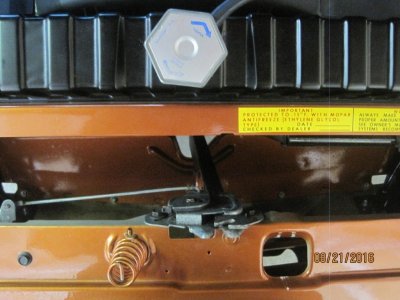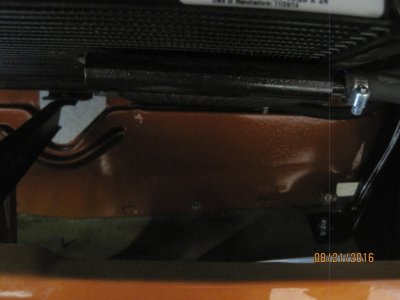All a clutch does is disengage the fan at higher speed because it it theoretically not needed due to ram air. I don't see how it could help (or hinder) a cooling problem. What am I missing?
i agree, the clutch frees up horsepower at higher speeds when the airflow is cool enough to disengage the fan from the water pump. At low speeds the clutch is engaged, same as a direct drive fan.
So TxDon, is still comes down to airflow at low speeds and cooling capacity. Per your pics, capacity isn't the issue.
As pointed out earlier, the fan blade tips should be within 1/2 - 1" of the shroud opening with the blades 1/2 inside, 1/2 outside the shroud. Checking out YO apparently your car takes the same shroud as my 69; the opening is about 19".
https://www.yearone.com/Product/chrysler-b-body/fd603
As insignificant as it looks, the hood to radiator seal is required on all cars, not just A/C. It's a cheap add if you don't have one.
https://www.yearone.com/Product/chrysler-b-body/fw935
And as cdr stated, initial timing plays a part; if initial is too retarded the car will run hot. My method of setting initial is using a vacuum gauge to find the highest vacuum at idle, but there are plenty of other methods. Depending upon your cam, 18* - 20* is a good ballpark.
ironically, I'm telling you all these fixes and I was in the same position as you just a month ago. What worked for me:
- Lower air dam wasn't installed properly; adjusted the position and tightened down
- #2 spark plug wire was arcing on the header; engine was fighting itself at idle. Repositioned the wire, added spark plug wire boots.
- Swapped in a larger diameter fan.
So far, so good.




















